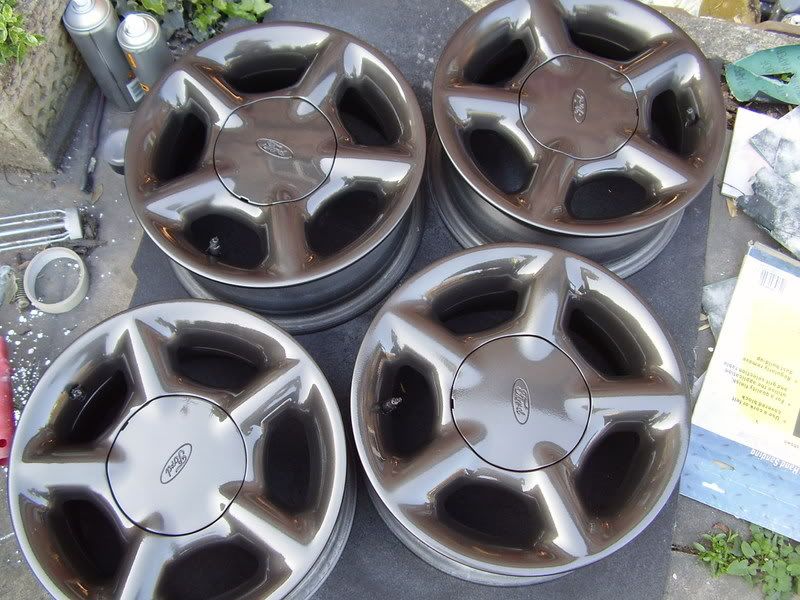You are using an out of date browser. It may not display this or other websites correctly.
You should upgrade or use an alternative browser.
You should upgrade or use an alternative browser.
What colour should I change my wheels to?
- Thread starter saitrix
- Start date
More options
Thread starter's postsAssociate
- Joined
- 16 Feb 2008
- Posts
- 307
- Location
- Staffordshire
Anthracite. White is just ridiculous but each to his/her own.
Soldato
- Joined
- 7 Feb 2004
- Posts
- 8,221
- Location
- North East
Your white chop looks great.
I thought the car colour was awful tbh, until I saw the day shots lol. Looks hideous in the top photos
I thought the car colour was awful tbh, until I saw the day shots lol. Looks hideous in the top photos

Associate
- Joined
- 6 Feb 2006
- Posts
- 1,747
- Location
- Glasgow
White
Soldato
- Joined
- 8 Mar 2006
- Posts
- 13,300
- Location
- Near Winchester
Was thinking black innards like paradigm. But White looks so much better.
Shame it's imported from a country with full size front plates. Could have used a small front plate and kept the nose nice and round. Not allowed now it has the proper mount fitted.
Shame it's imported from a country with full size front plates. Could have used a small front plate and kept the nose nice and round. Not allowed now it has the proper mount fitted.
Gold

God no! It'll look like you're trying to look like a Subaru. I had that exact colour scheme on an MX-5 on Need for Speed Underground and that's because I was trying to take the ****.
Japanese use small front plate's though. :S Are you saying that you are allowed the shape of the original countrys reg plate?
Well, you can use the official square import style plate with correct spacing and whatnot. Check out demon plates for examples. I see a lot of these with decal type plates but I have no idea on the legality.
The legality is that that there is no law on the size of a number plate, the only law is on the size/spacing of the lettering involved, these are:
Character Height: 79mm
Character Width (except the figure 1 or I): 50mm
Character Stroke: 14mm (the width of the letter I and the width of the lines used to make up other letters)
Space between characters: 11mm
Space between groups: 33mm (ie. between A123 and ABC)
Top, bottom and side margins (minimum): 11mm
Space between vertical lines: 19mm (ie. on lorry plates)
This tends to lend itself to the two standard sized plates we see on the road today, however if you have a UK car and own the plate "A1" you could legally have a plate 119mm wide.
However if you car is an import and "its design cannot accomodate a standard size plate" then the lowest you can go is:
Character Height: 64mm
Character Width (except the figure 1 or I): 44mm
Character Stroke: 10mm
Space between characters: 10mm
You'll notice there's no requirement for a border or a space between groups.
Basically you can fit a motorbike plate, however in practice people tend to fit the plates sized after the original country's plates (approx 13"x6.5" for Japan) even though this is wider than it needs to be. The other common one is if you own a JDM car where the number plate hangs off the bottom edge of the bumper (Such as on the Skyline) you register a 5 or 6 digit private plate and go for the JDM width but UK height so it doesn't overhang any more. This is what I intend to do on my Cefiro.
All other number plate rules such as no graphics apart from the Euro/UK/Eng/Sco/Wales/NI flag and the requirement for the plate supplier's details still apply.
Character Height: 79mm
Character Width (except the figure 1 or I): 50mm
Character Stroke: 14mm (the width of the letter I and the width of the lines used to make up other letters)
Space between characters: 11mm
Space between groups: 33mm (ie. between A123 and ABC)
Top, bottom and side margins (minimum): 11mm
Space between vertical lines: 19mm (ie. on lorry plates)
This tends to lend itself to the two standard sized plates we see on the road today, however if you have a UK car and own the plate "A1" you could legally have a plate 119mm wide.
However if you car is an import and "its design cannot accomodate a standard size plate" then the lowest you can go is:
Character Height: 64mm
Character Width (except the figure 1 or I): 44mm
Character Stroke: 10mm
Space between characters: 10mm
You'll notice there's no requirement for a border or a space between groups.
Basically you can fit a motorbike plate, however in practice people tend to fit the plates sized after the original country's plates (approx 13"x6.5" for Japan) even though this is wider than it needs to be. The other common one is if you own a JDM car where the number plate hangs off the bottom edge of the bumper (Such as on the Skyline) you register a 5 or 6 digit private plate and go for the JDM width but UK height so it doesn't overhang any more. This is what I intend to do on my Cefiro.
All other number plate rules such as no graphics apart from the Euro/UK/Eng/Sco/Wales/NI flag and the requirement for the plate supplier's details still apply.







